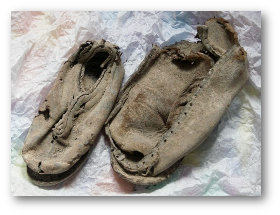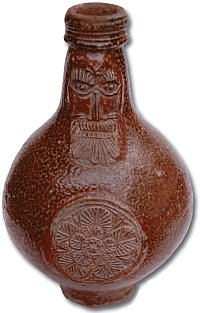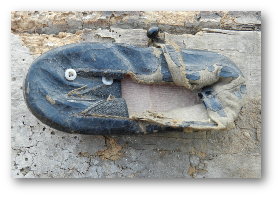More “House Magic”: Ritual deposits in vernacular buildings.
Historically the placement of selected objects or animal remains in strategic and hidden parts of buildings is widespread from the late Bronze Age and certainly from Roman times when, after the suppression of sacrifices, they were intended to repel malevolent powers.

Within standing vernacular buildings, particularly during extensive renovations rather than house surveys, objects are found placed below thresh-holds, alongside windows, below the hearth and floors, in wall or attic spaces and in the thatch. This was likely to be a ‘one off’ deposit, placed as the opportunity arose, probably at construction time.
Deposits of dried cats or horse skulls. Both animals are credited with being able to ‘see’ more than humans can; cats also had a close association with witches. It was believed that these would act as a decoy to the evil spirits.
Cats too could be credited with protection from vermin. By 2004 over 100 cat finds had been recorded in England and 50 in Germany. Most were concealed after their death, several had their legs bound, some were artificially posed in aggressive attack postures and some were accompanied by rats. A mere 6 had been found in the West Country with the nearest to Somerset probably dated to the C18th and now displayed in a pub in Stoke Gabriel, Devon.
Horse skulls are not generally found in England but are more common in Wales and Ireland and occur world-wide. Hoggard (2004) suggested their use as a ‘foundation’ offering for a new building.

Witch Bottles stem from the C16th & C17th and are usually found beneath the hearth or threshold, but sometimes beneath the floor or in walls. Over 200 have been found in England; most of these have been ‘bellamines’, grey stone-ware, pot-bellied bottles often with a mask depicted on them but later ones may be made of glass. The contents (hair, the ‘magic metal’ iron in the form of pins or nails, urine and occasionally fabric cut in the shape of a heart) all appear to constitute a kind of spell.
The ‘Spiritual Midden’ is an extension of this singular deposit, carried out solely by some occupants at some point in the habitation of the vernacular building. Many objects included in these ‘middens’ display a level of wear-and-tear or breakage that suggests that they were at the end of their useful life when deposited. As a broad range of items might be concealed it is perceived that their value does not derive from the material used or their original function but rather to their prolonged use by the inhabitants of the household. Spiritual middens also occur in buildings in America and Australia and are presumed to be part of the ‘cultural baggage’ of convicts and settlers.
During the C16th. the fear of witchcraft coincided with an improvement to older houses. During what has been coined “The Great Rebuild” stone chimneys were inserted and rooms ‘ceiled’, to create an upper floor; voids were created alongside the chimney or around the joists and filled:

Fireplace or chimney middens were open at the top and provided a chute into which worn objects, associated with the family in their daily life, were deposited. Unlike the single object deposit these middens appear to accumulate over the years. They often contain shoes and, because they are so reliably dated, it is possible to say that these cashes of valuable ‘rubbish’ were deposited over generations. It is supposed that the personal possessions were a substitute for the occupants themselves and that the midden acted like a lightening conductor to divert the familiar as it tried to enter the house. One deposit, as late as the 1850’s contained 32 shoes!
Some middens contain burnt wood. Can retaining burnt timber as a good luck symbol apply in this instance and is this superstition related to the re-use of an old Yule log in vernacular buildings at Christmas?
Some middens contain chicken bones; was the cockerel crow meant to keep evil spirits at bay? Can this concept also explain the etching of ‘chickens’ on a vernacular inglenook.

Shoe deposits do occur aside from being part of a midden. They are always within or near the hearth and more than 1,200 have been discovered. 26% found on a ledge in a chimney; of these 40% belonged to children and most were odd shoes always well worn and frequently repaired.
Ceiling deposits. By the C19th the habit was becoming more casual and worn shoes or clothing were strewn between the ceiling and the floor-boards. Even in the 1930’s it seems that hidden voids left the occupants feeling fearful. So this tradition was continued by some builders into the 1950’s, according to verbal evidence given by builders working in small family firms!